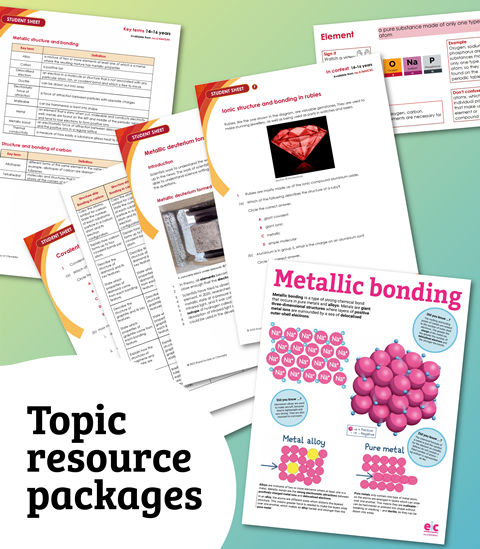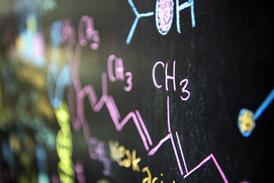All RSC Education articles in Non-EiC content – Page 61
-
 Resource
ResourceChemical misconceptions II: Types of chemical reaction
Explore learner’s knowledge on types of chemical reactions, and strengthen their prior skills with an in-depth worksheet.
-
 Resource
ResourceChemical misconceptions I: Chemical axioms
Explore the key ideas into how learners respond to the fundamental principles used in chemistry.
-
 Resource
ResourceChemical misconceptions II: Learning impediment diary
This resource is a proforma for teachers who wish to keep a record of learning impediments they meet in their teaching.
-
 Resource
ResourceChemical misconceptions I: Chemical reactions
Explore chemical reactions, how to describe them, form word equations, and why they occur.
-
 Resource
ResourceChemical misconceptions I: Scaffolding learning in chemistry
Explore how to create a learning scaffold in chemistry, and how learners may respond to this reinforcement.
-
 Resource
ResourceChemical misconceptions I: The structure of chemical knowledge
Explore the key ideas of conceptual structures in chemistry, and how students can map these concepts to make connections.
-
 Resource
ResourceChemical misconceptions I: Overcoming learning impediments
Explore how you can support learners through their barriers to learning, in order to gain a clearer understanding of the chemical sciences.
-
 Resource
ResourceChemical misconceptions I: Alternative conceptions in chemistry teaching
This resource includes information about some key misconceptions that may help avoid students acquiring some common misconceptions.
-
 Resource
ResourceStarters for 10: Advanced level 2 (16–18)
This chapter in our Starters for ten series covers: kinetics, equilibria, acids and bases, carbonyl chemistry, aromatic chemistry, compounds with amine groups, polymers, structure determination, organic synthesis, thermodynamics, periodicity, redox equilibria, transition metal chemistry, and inorganics in aqueous solution.
-
 Resource
ResourceThe heat is on: edible experiments
Why are chillies and mustard hot, but taste different? Discover the importance of chemistry in everyday eating experiences with this edible experiment.
-
 Resource
ResourceRates and equilibria
This activity demonstrates the links between the topics of rates of reaction and the equilibrium law. It provides students with an explanation of the equilibrium law and helps them explain why Le Chatelier’s principle works for temperature, concentration and pressure.
-
 Class experiment
Class experimentThe preparation and properties of oxygen
Produce a potassium manganate(VII) reaction using a test tube, Bunsen burner, and scientific inquisition to detect the presence of oxygen. Includes kit list and safety instructions.
-
 Class experiment
Class experimentExperiments with particles
Explore physical states, and how material interact with three practicals. Students use common classroom items to explore, and then note their findings. Includes kit list and safety instructions.
-
 RSC News
RSC NewsSchools' Analyst competition 2017
Report on the Royal Society of Chemistry Analytical Division’s 28th national Schools’ Analyst competition final 2018.
-
 Resource
ResourceSugar rush: edible experiments
Why is fudge gooey and why are hard boiled sweets hard? Discover the importance of chemistry in everyday eating experiences with this edible experiment.
-
 Resource
ResourceTooth furry: edible experiments
What causes that ‘furry’ teeth feeling when eating spinach? Discover the importance of chemistry in everyday eating experiences with this edible experiment.
-
 Resource
ResourceTemper, temper: edible experiments
Why is tempering chocolate so important? Discover the importance of chemistry in everyday eating experiences with this edible experiment.
-
 Resource
ResourceSupertaster: edible experiments
Do we all experience exactly the same flavours? Discover the importance of chemistry in everyday eating experiences with this edible experiment.
-
 Resource
ResourceLove you, honey: edible experiments:
How can honey be solid or runny? Discover the importance of chemistry in everyday eating experiences with this edible experiment.
-
 Class experiment
Class experimentSherbet and popping candy: edible experiments
What makes sherbet fizz, and what makes popping candy pop? Discover the importance of chemistry in everyday eating experiences with this edible experiment











